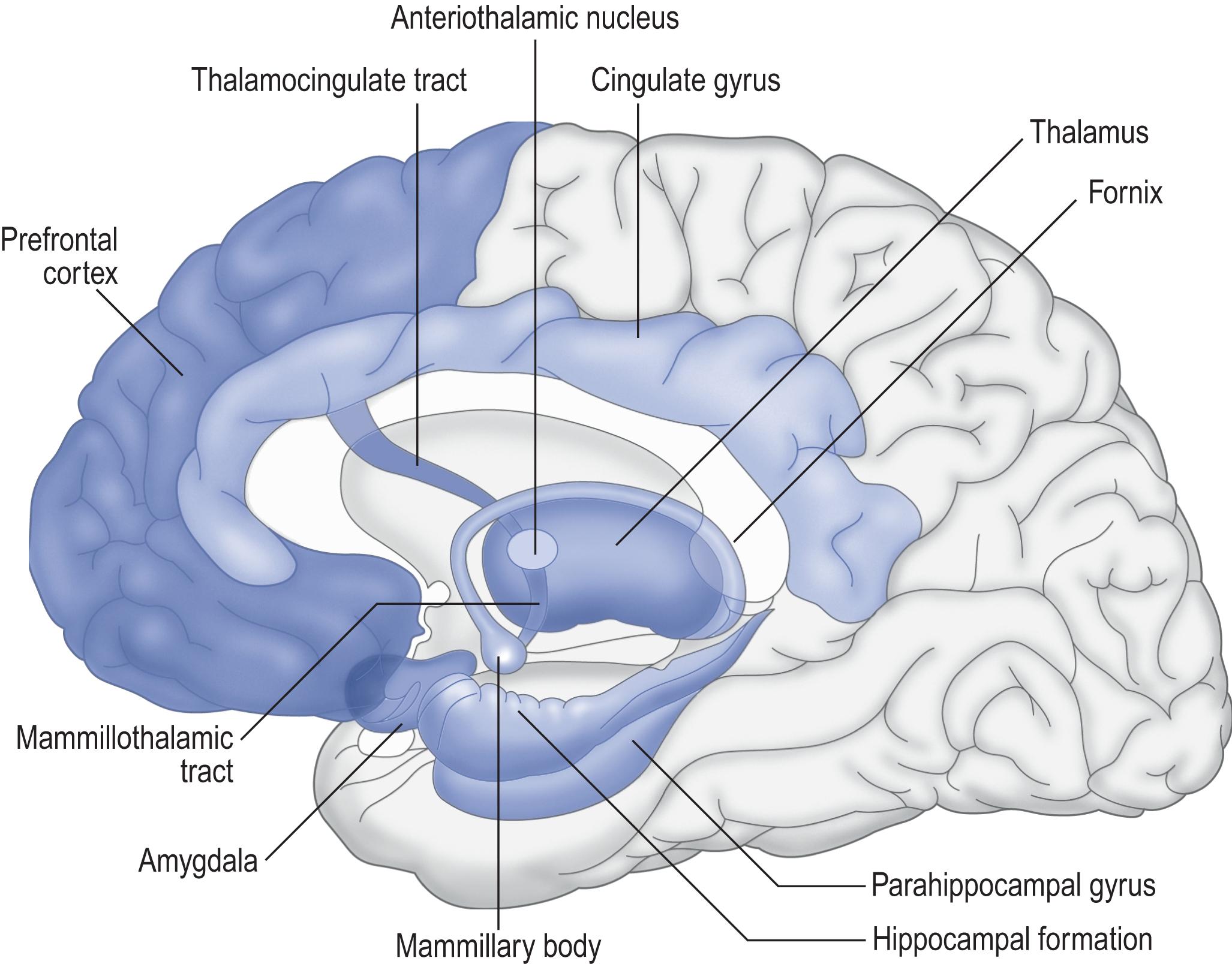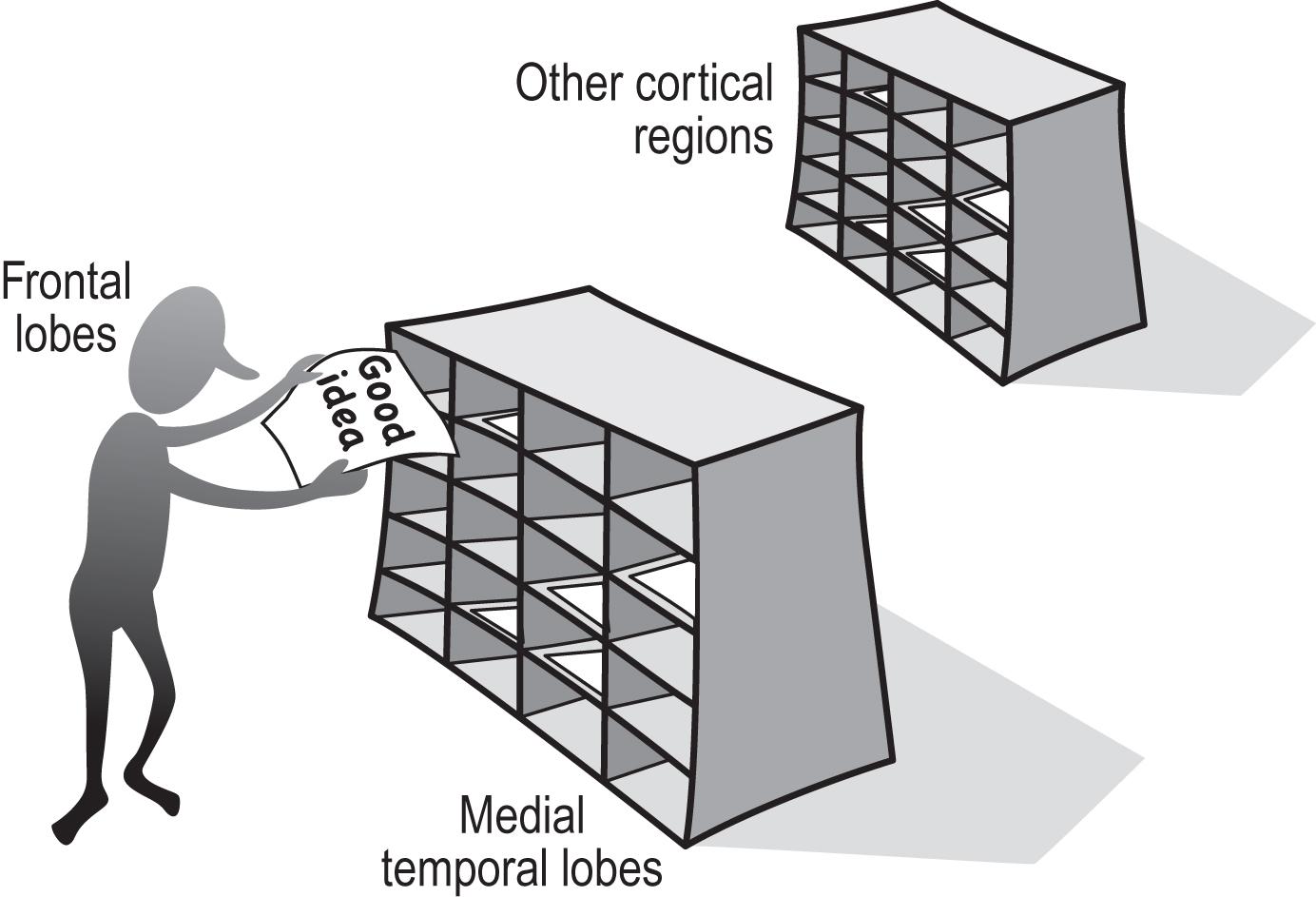Physical Address
304 North Cardinal St.
Dorchester Center, MA 02124
Here we will discuss the current understanding of memory to aid the clinician’s knowledge of how memory breaks down in Alzheimer’s disease, how that breakdown of memory is different from how memory declines in normal aging, and also how other causes of dementia may affect different aspects of memory.
The four memory systems that are of clinical relevance are discussed: episodic memory, semantic memory, procedural memory, and working memory ( Table C1 ). Additional details may be found in and in , , , and .
| Memory System | Examples | Awareness | Length of Storage | Major Anatomical Structures |
|---|---|---|---|---|
| Episodic memory | Remembering a short story, what you had for dinner last night, and what you did on your last birthday | Explicit declarative | Minutes to years | Medial temporal lobes, anterior thalamic nucleus, mamillary body, fornix, prefrontal cortex |
| Semantic memory | Knowing who was the first President of the USA, the color of a carrot, and how a fork and comb are different | Explicit declarative | Minutes to years | Inferior lateral temporal lobes |
| Procedural memory | Driving a standard transmission car, and learning the sequence of numbers on a touch-tone phone without trying | Implicit nondeclarative | Minutes to years | Basal ganglia, cerebellum, supplementary motor area |
| Working memory | Phonological: keeping a phone number “in your head” before dialing; Spatial: mentally following a route, or rotating an object in your mind | Explicit declarative | Seconds to minutes; information actively rehearsed or manipulated | Phonological: prefrontal cortex, Broca’s area, Wernicke’s area; Spatial: prefrontal cortex, visual association areas |
Episodic memory is the memory system that we use to recall personal episodes of our life, such as remembering a short story we read or last night’s dinner. Episodic memory loss follows a predictable pattern known as Ribot’s law, which states that recently acquired memories are more vulnerable to loss than longer established ones.
This memory system depends on the medial temporal lobes (including the hippocampus and entorhinal and perirhinal cortex). Other critical structures (some of which are associated with a circuit described by ) include the basal forebrain with the medial septum and the diagonal band of Broca, the retrosplenial cortex, the mammillothalamic tract, and the anterior nucleus of the thalamus. A lesion in any one of these structures may cause the impairment that is characteristic of dysfunction of the episodic memory system ( Fig. C1 ). Note that the left medial temporal lobe is most involved when learning words, whereas the right medial temporal lobe is most involved when learning visual scenes and other images.

The frontal lobes are also important for certain aspects of episodic memory, including the registration, acquisition, or encoding (learning) of information, retrieval of information without contextual and other cues, recalling the source of information, and assessing the temporal sequence and how recent events are. Distortions of memories and even false memories may occur as a result of frontal lobe dysfunction, such as when information becomes associated with the wrong context or specific details are incorrect.
One way to think about how the frontal and medial temporal lobes work together is by an oversimplified but useful analogy ( Fig. C2 ):
The frontal lobes are the “file clerk” of the episodic memory system
The medial temporal lobes are the “recent memory file cabinet”
Other cortical regions are the “remote memory file cabinet.”

If the frontal lobes are impaired, it is difficult, although not impossible, to get information in and out of storage. And the information may be distorted owing to “improper filing” leading to inaccurate context or sequence. If the medial temporal lobes are damaged, it will be difficult or impossible for recent information to be retained. This damage will often lead to the patient asking for the same information again and again—perhaps 20 times in an hour. Older information that has been “consolidated” over months to years is thought to be stored in other cortical regions, and will therefore be available even when the medial temporal lobes are damaged.
Alzheimer’s disease (see Chapter 4 ) is the most common disorder that disrupts episodic memory. Because Alzheimer’s disease affects the medial temporal lobes first and foremost, patients with Alzheimer’s disease have a dysfunctional “recent memory file cabinet.” That their recent memory file cabinet is dysfunctional explains why these patients lose information quickly and ask the same information repeatedly. Because their remote memory file cabinet is relatively spared explains why these patients tend to dwell in the past. Other common disorders that disrupt the recent memory file cabinet as a result of medial temporal lobe or Papez’s circuit dysfunction include limbic-predominant age-related TDP-43 encephalopathy (LATE) (see Chapter 6 ), Korsakoff’s syndrome (see Chapter 17 ), and hypoxic–ischemic injury.
In contrast to Alzheimer’s disease that initially affects the medial temporal lobes disrupting the recent memory file cabinet, many other disorders affect the frontal lobes first, thereby impairing the file clerk. Disorders with an impaired file clerk owing to frontal lobe dysfunction include normal aging, depression (see Chapter 17 ), behavioral variant frontotemporal dementia (see Chapter 10 ), vascular dementia (see Chapter 7 ), multiple sclerosis, and traumatic brain injury.
Thus patients with Alzheimer’s disease have a dysfunctional recent memory file cabinet, whereas the file clerk is impaired in normal aging and depression. From a practical standpoint, these differences in the way that episodic memory is disrupted mean that repetition of information can overcome the learning impairments of depression and normal aging, whereas learning remains impaired in Alzheimer’s disease. Similarly, although cues (hints), multiple choice, and recognition memory tests help everyone compared with trying to recall information “off the top of one’s head,” retrieval deficits can be completely overcome with cues, multiple choice, and recognition in those with depression and normal aging, whereas retrieval remains impaired in Alzheimer’s disease.
Become a Clinical Tree membership for Full access and enjoy Unlimited articles
If you are a member. Log in here